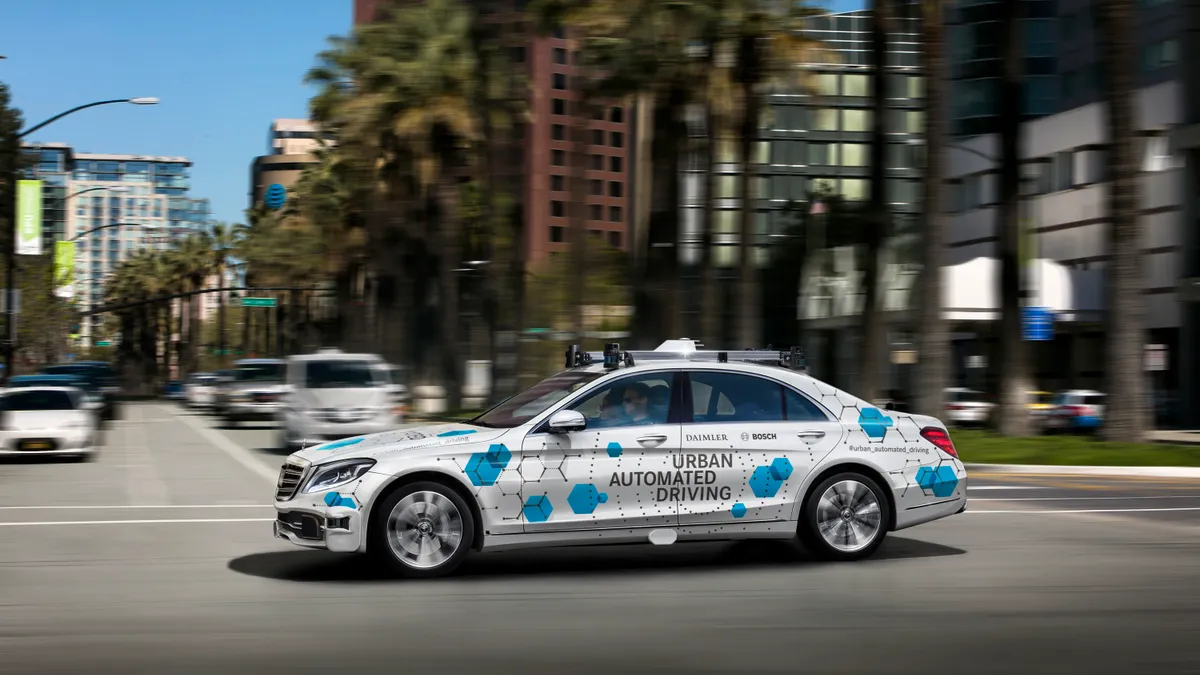Dive Brief:
- A consortium of technology firms, automakers, ride-hailing companies and standards firm SAE International issued guidance on various safety performance metrics that should be measured when developing and operating autonomous vehicles (AVs).
- The Automated Vehicle Safety Consortium (AVSC) released a best practice guide recommending AV developers track the severity and frequency of crashes and citable traffic law violations; maintain a defined space around a vehicle as a buffer between other objects; show safe vehicle control when in motion; and share its reaction time when it detects objects and events.
- Measuring those metrics consistently will help improve communication between developers, regulators and the public, and help build confidence in AVs, according to AVSC. The group said the metrics can continue to be measured through AV development, testing and deployment.
Dive Insight:
AVSC has brought together a variety of automakers and other groups to develop various frameworks around AVs. And AVSC Director Amy Chu said in an interview this latest package could be most significant as it would bring consistency to an industry where various technology companies, automakers and other industry leaders battle to be the first to market. If companies can agree on a baseline for safety standards, that will be a positive step, she said.
"If we're not speaking the same language and we don't understand each other, it makes it really hard to get it right," Chu said. "And with this technology in particular, safety is paramount, so we have to get it right. In order to do that properly, we need to be able to communicate with each other."
Safety has been one of the major issues facing AV deployment and public acceptance, especially after the high-profile crash with a pedestrian in Tempe, AZ in 2018 involving an Uber AV. Public acceptance has shown signs of growth during the coronavirus pandemic, but remains lower than automakers, technologists and elected officials would like to see.
AVSC's metric of maintaining a space around the vehicle is based on the typical driving practice of leaving two car lengths. And keeping track of traffic violations is designed with the aim that AVs will obey traffic laws, but will still need their behavior to be monitored closely.
With a number of AV developers involved in creating these guidelines, Chu said it could create consistency across the industry, especially if more companies decide to adhere to the same standards.
"The benefit comes that if there is further discussion or ways to get into a little more detail when it comes to writing standards, this is the common language that we're talking, and we can have those conversations and improve going forward," she said.
After years of debate and failed legislation, AVs could get their moment in the national spotlight under President Joe Biden and Transportation Secretary Pete Buttigieg, who has expressed a desire to see policymaking keep up with the advances in technology. Chu said while government leadership will be important, the evolution in self-driving capabilities will continue, so standards will be important regardless of what comes out of Congress.
"I think we're on a continuum," she said. "We've been going at this for a long time. If you look back about five years or six years, probably longer than that, I think there was an expectation that we would be there already by now. But the truth is, we have a way to go. And there's a lot of things we need to sort out."












